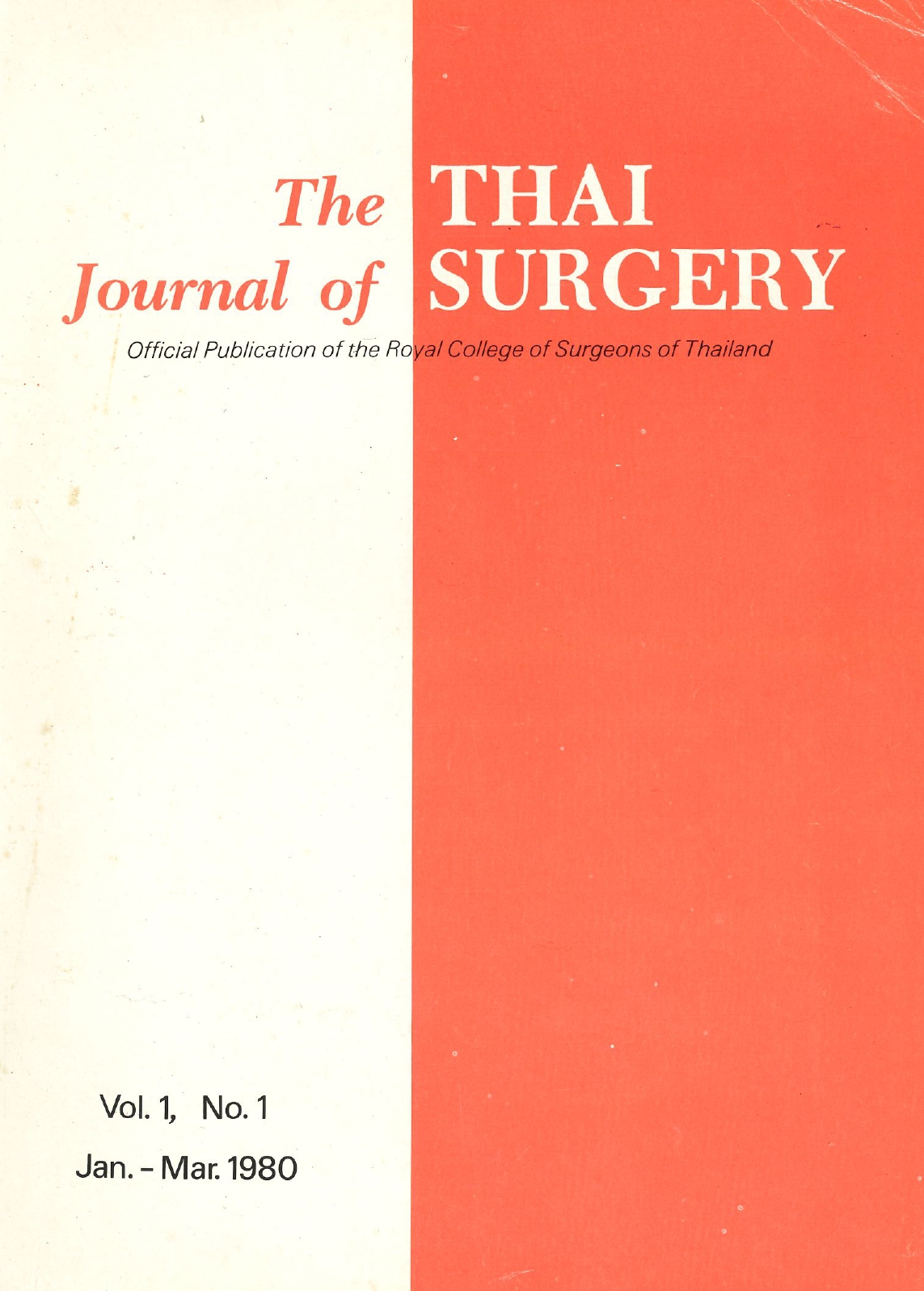Management of Diabetes Mellitus in Surgical Patients
Abstract
Diabetes mellitus is a very common disease afflicting two percent of the general population. Therefore, a practicing surgeon will inevitably, sooner or later, encounter one of these patients undergoing surgical procedures or having an infected wound treated. Extensive experience of surgeons of previous generations taught them not to take diabetic patients lightly because of the increased incidence of both the intra-operative and post-operative complications which may occur in these patients. In fact, the fledgling new generation of surgeons are too cautious in dealing with diabetic patients, which results occasionally in inadequate treatment. In dealing with the diabetic patient, it is not the control of the blood sugar per se that is the most important thing. It is also the thorough knowledge of the nature and possible complications which may occur among the diabetic patient and the exercise in prevention of these complications that are of the utmost importance. With modern anesthesia and antibiotics, the diabetic patient can take on even the most difficult operation almost as well as the nondiabetic patient, if certain precautions for the diabetic patient is exercised. Most surgeons are concerned about the preparation of the diabetic patient for surgery and the best way to control blood sugar during intra-operative periods. There are many articles concerning these points both in review articles1,2 and in standard textbooks3, 4. This article has tried to select the method which the author found most practical and most effective for discussion. Most diabetologists now agree on the use of intermediate acting insulin such as NPH and Lente insulin for the preparation of diabetic patients for surgery. The use of only short acting insulin (regular insulin) for urine coverage, a method used by many surgeons in the old days, is no longer acceptable as smooth control of the blood sugar cannot be achieved with such a method, especially in the insulin dependent diabetic patients. In addition to the preparation of diabetic patients for surgery. This article will also attempt to answer many common questions which surgeons usually ask about diabetic patients and will also discuss the principle of treatment of diabetic wounds.
References
2. Steinke, J: Management of Diabetes Mellitus and Surgery. New Engl J Med 282: 1472, 1970.
3. Wheelock, FC, Jr, and Marble, A: Surgery and Diabetes. In Joslin’s Diabetes Mellitus. 11th edition. A Marble, P White, RF Bradley and LP Krall Eds. Philadelphia, Lea and Febiger 1971 pp 599-620.
4. Marble, A: Surgery in the Patient with Diabetes in Diabetes Mellitus, KE Sussman and RJS Metz Eds. Pp 129-133. American Diabetes Association, New York. NY 1975.
5. Levin, ME and O’Neal LWO: The Diabetic Foot, CV Mosby, Saint Louis, 1973.
Downloads
Published
How to Cite
Issue
Section
License
Articles must be contributed solely to The Thai Journal of Surgery and when published become the property of the Royal College of Surgeons of Thailand. The Royal College of Surgeons of Thailand reserves copyright on all published materials and such materials may not be reproduced in any form without the written permission.



